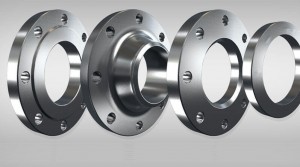Butt weld flanges are an important component in various industrial applications, especially in piping systems. These flanges are designed to provide safe, leak-free connections between pipes, valves, and other equipment. Understanding how butt weld flanges work is critical to ensuring the safety and efficiency of industrial processes.
The core of a necked weld flange consists of a disc with a protruding neck or hub. This neck is welded to the piping system, hence the name “butt weld flange“. The design of butt weld flanges offers several advantages over other types of flanges, making them a popular choice in industries such as oil and gas, petrochemicals, and power generation.

One of the primary functions of a butt weld flange is to provide reinforcement at the joint where the pipe meets other components. The welding of the neck to the pipe ensures a strong and permanent connection that can withstand high pressures and temperatures. This makes butt weld flanges ideal for applications where safety and reliability are critical.
Another important aspect of how butt weld flanges work is their ability to reduce stress concentrations at the joint. The smooth transition from neck to pipe helps distribute stress more evenly, minimizing the risk of fatigue failure. This is especially important for piping systems that are subject to vibration, thermal expansion, or other dynamic loads.
In addition to their mechanical advantages, butt weld flanges provide a high level of integrity in preventing leaks. The flange’s extended neck allows for a smooth bore, reducing turbulence and pressure drop in the system. In addition, neck welding ensures a tight and reliable seal, making butt weld flanges suitable for applications where leakage may have serious consequences.
Proper installation of butt weld flanges is critical to ensuring their effective operation. The welding process must be performed according to industry standards and best practices to avoid defects such as porosity, undercuts, or lack of fusion. Additionally, using compatible materials and gaskets is critical to preventing corrosion and maintaining the integrity of flange joints.
It is also important to consider the correct selection of butt weld flanges based on the specific requirements of the application. Factors such as flange material of construction, pressure rating, and size must be carefully evaluated to ensure proper fit and performance. Consulting with a qualified engineer or industry expert can help you make an informed decision about butt weld flange selection.
In summary, understanding how butt weld flanges work is critical to ensuring the reliability and safety of industrial piping systems. Their ability to provide safe, leak-free and pressure-resistant connections makes them an indispensable component in various industries. By following best practices for installation and maintenance, butt weld flanges can increase the efficiency and longevity of industrial processes.
Post time: Feb-02-2024



